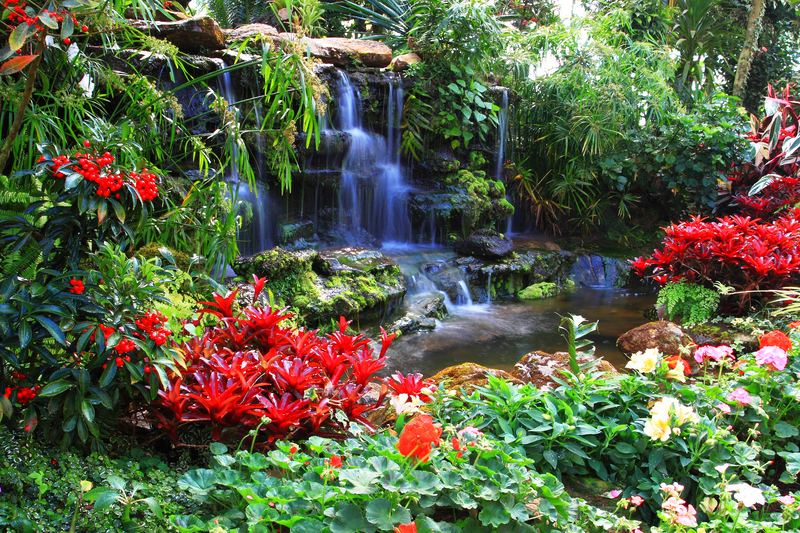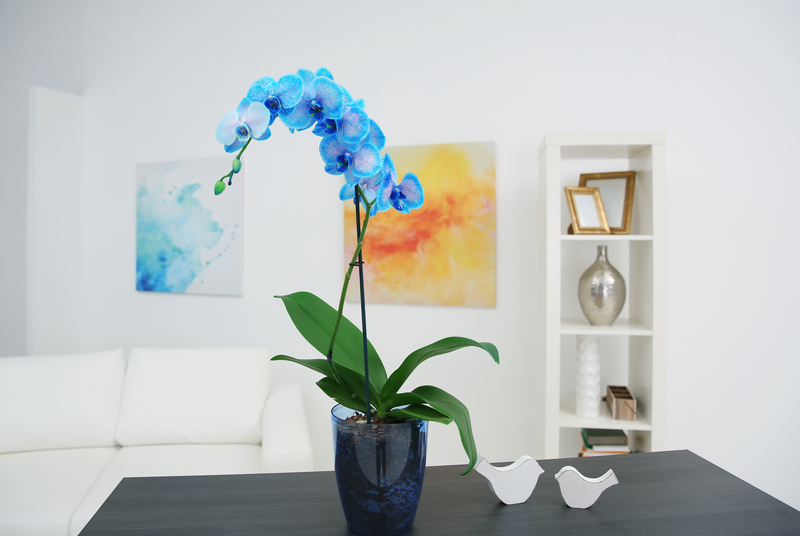Reimagine Your Shady Corners with Evergreen Climbers
Posted on 20/05/2025
Reimagine Your Shady Corners with Evergreen Climbers
Shaded corners in your garden often seem like wasted space or problem areas where little can thrive. However, with a little creativity and the right plants, these shady corners can become the lush, green sanctuaries of your outdoor space. One of the best ways to transform these spots is by using evergreen climbing plants, which offer year-round coverage, color, and even vertical interest. Read on to discover how you can reimagine your shaded areas with beautiful, hardy evergreen climbers.
Why Choose Evergreen Climbers for Shady Areas?
Evergreen climbers are a wonderful solution for gardens with limited sunlight. They thrive in low-light conditions where many other plants fail, and because they retain their foliage all year, they add structure, texture, and color even in winter.
- Year-round interest: Unlike deciduous climbers, evergreens maintain their leaves, giving continuous coverage and privacy.
- Low maintenance: Once established, most evergreen climbing plants require minimal upkeep.
- Wildlife habitats: Dense foliage provides shelter and food for birds and beneficial insects.
- Versatility: Evergreen climbers can screen fences, disguise unsightly walls, and even be trained over pergolas or arches in shaded spots.
Transforming your dark corners into a verdant oasis is easier than you think. With the right climbers, you can create a lush backdrop for the rest of your garden.

Top Evergreen Climbing Plants for Shade
Not all climbers are suitable for shaded areas, but several robust varieties can flourish even without direct sunlight. Here are some of the best evergreen climbers for shade to get you started:
Ivy (Hedera helix)
Ivy is a classic choice for shaded areas. This fast-growing, hardy evergreen clings to walls, fences, and trellises, providing dense cover. Modern cultivars come in a range of leaf colors and sizes, from glossy green to variegated patterns. Try to choose less invasive varieties, especially if you're in regions where some ivies are considered aggressive.
- Thrives in: Deep shade to partial sun
- Grows: Up to 30 meters, but easily pruned
- Care tips: Regular trims keep it tidy and prevent it from overwhelming other plants or structures.
Climbing Hydrangea (Hydrangea anomala subsp. petiolaris)
Climbing hydrangea is a showstopper in shaded spots, valued for its large, heart-shaped leaves and lace-cap white flowers in early summer. This woody evergreen climbing plant will cling to walls or can be trained over arches and pergolas.
- Thrives in: Partial shade to full shade
- Grows: Up to 15 meters over time
- Care tips: Requires patience during initial planting - it can be slow to establish but rewards over time.
Star Jasmine (Trachelospermum jasminoides)
If your shaded spot gets dappled or partial sun, star jasmine is a wonderful option. With glossy foliage and sweetly scented white flowers, it adds both fragrance and color. In mild winters, the foliage remains lush and green year-round.
- Thrives in: Partial shade
- Grows: Up to 8-9 meters
- Care tips: Needs some sun to flower best. Excellent for shaded patios or north-facing walls.
Pyracantha (Firethorn)
Pyracantha is another evergreen climbing shrub that can be trained against walls and fences. It is ideal for semi-shaded areas and is prized for its sprays of white flowers followed by brilliant orange or red berries that last into winter.
- Thrives in: Partial shade
- Grows: 3-5 meters
- Care tips: Watch for its sharp thorns - it makes an excellent intruder-proof barrier for dark corners.
Winter Jasmine (Jasminum nudiflorum)
Winter jasmine is a semi-evergreen to evergreen climber, depending on your climate. It produces cheerful yellow flowers in the depths of winter, brightening up the darkest corner when little else is in bloom.
- Thrives in: Partial shade
- Grows: Up to 3 meters
- Care tips: It will scramble up supports or spill over walls. Hardy and reliable.
Other Notable Evergreen Climbers for Light or Deep Shade
- Akebia quinata (Chocolate Vine): Semi-evergreen with unusual, aromatic flowers.
- Hedera colchica: Larger-leaved ivy suitable for very deep shade.
- Euonymus fortunei (Wintercreeper): Variegated forms add interest and tolerate shade well.
How to Plant Evergreen Climbers in the Shade
Evergreen climbing plants need a good foundation to thrive, especially in shade where soil can be dry and hard-packed under trees or close to walls and buildings. Follow these guidelines for the best results:
Soil Preparation
- Loosen the soil: Use a fork to break up compacted soil and mix in generous amounts of compost or leaf mold.
- Test for drainage: Most climbers dislike soggy feet, so make sure your soil drains freely.
- Feed: A slow-release fertilizer at the base will give your climber a strong start.
Planting Technique
- Plant away from the wall: Place the plant about 30-45 cm away from your fence or wall. This helps it avoid the dry "rain shadow" at the base of structures.
- Position supports: Tie main shoots to trellis, wires, or netting as needed to guide your evergreen vine upward.
- Water well: Water thoroughly after planting and keep moist while the roots establish, especially in the first year.
Maintenance for Shade-Loving Climbers
- Mulch: Spread bark, compost, or leaf mold around the base to trap moisture and feed soil life.
- Regular pruning: Trim to control size and encourage bushier growth. Remove any dead or spindly branches as they appear.
- Check for pests: Shade can encourage slugs and snails, so inspect regularly and take action if needed.
Creative Ways to Use Evergreen Climbers in Shady Corners
Evergreen climbers for shade are remarkably versatile and can utterly transform awkward or neglected spaces. Here are a few ideas to inspire you:
1. Covering Fences and Walls
Use evergreen climbing vines to blanket unsightly boundaries, distracting the eye from plain brick, wood, or even concrete. The persistent foliage softens harsh lines and creates a backdrop for brighter planting schemes in front.
2. Vertical Gardens in Shade
Install a simple trellis or wire mesh and train your climbers to form a living wall. In deep shade, variegated ivies and Euonymus add texture and interest. Combine with shade-loving ferns or hostas at the base.
3. Privacy Screens
Evergreen climbers offer natural privacy even in winter. Grow them on pergolas or along tight pathways to shield sitting areas or windows from neighboring views year-round.
4. Enhancing Entrances and Arches
Frame your entryway with dense evergreen foliage and, with scented varieties like star jasmine, enjoy fragrance as you pass by. Shade entrances are often neglected but can become charming with the right plant choice.
5. Disguising Utility Areas
Hide sheds, bins, or air conditioning units from view by growing a shady climber over trellises or garden screens. The lush coverage draws attention away from the practical elements of your garden.
Evergreen Climbers in Containers for Shade
Even if you don't have open soil, you can still make use of shade-tolerant climbers and vines to cover walls or fences by growing them in large containers. Here's how:
- Choose a big pot: At least 40cm wide and deep for root growth.
- Use high-quality compost: Mix in slow-release fertilizer and water retardant granules if possible.
- Install supports: Insert a tall obelisk, tripod, or fan trellis directly into the container for your climber to latch onto.
- Water and feed regularly: Shade containers can dry out unexpectedly, so check moisture and top up as needed.
Container-grown climbers give you flexibility to move and adjust your green privacy screens as needed -- a great way to experiment before planting in the ground.

Frequently Asked Questions About Evergreen Climbers for Shade
Which evergreen climbers grow best in deep shade?
Ivy (Hedera helix and colchica) is the top performer in very deep shade. Euonymus fortunei 'Sulphur Heart' and certain types of climbing hydrangea also cope well with low light.
Will my evergreen climber flower in shade?
Some, like climbing hydrangea or star jasmine, will flower less profusely in deep shade but can still bloom with some dappled or morning sun. If flowers are important, aim for climbers that tolerate partial shade rather than full shade.
How can I avoid climbers becoming invasive?
Choose modern cultivars bred for garden use, and always keep up with regular pruning. Avoid planting highly vigorous ivies near trees, as they can climb and smother mature trunks if unchecked.
Do evergreen climbers damage walls or fences?
If allowed to grow unchecked, some climbers may become heavy or root into mortar, especially ivies. Gently train stems onto supports, and keep growth off rooflines and gutters, to protect your property.
Are all evergreen climbers pet and wildlife friendly?
Most are, and all provide excellent shelter for birds. However, pyracantha berries and ivy leaves can be toxic to pets if ingested, so plant with care if you have curious animals.
Conclusion: Bring New Life to Your Shaded Corners
You don't have to settle for dull or empty spaces just because they're shaded. With the right evergreen climbing plants for shade, you can reimagine, refresh, and reinvigorate every neglected nook in your garden. From simple ivy to stately climbing hydrangeas or fragrant jasmines, there are evergreen climbers suitable for every level of shade and style.
By carefully choosing your plants, preparing the soil, and giving a little initial care, you'll enjoy lush vertical greenery all year round -- turning your once-forgotten shady corners into cherished focal points.
Start reimagining your shaded corners today with beautiful evergreen climbers, and watch your garden transform into a vibrant, living tapestry that delights in every season.

